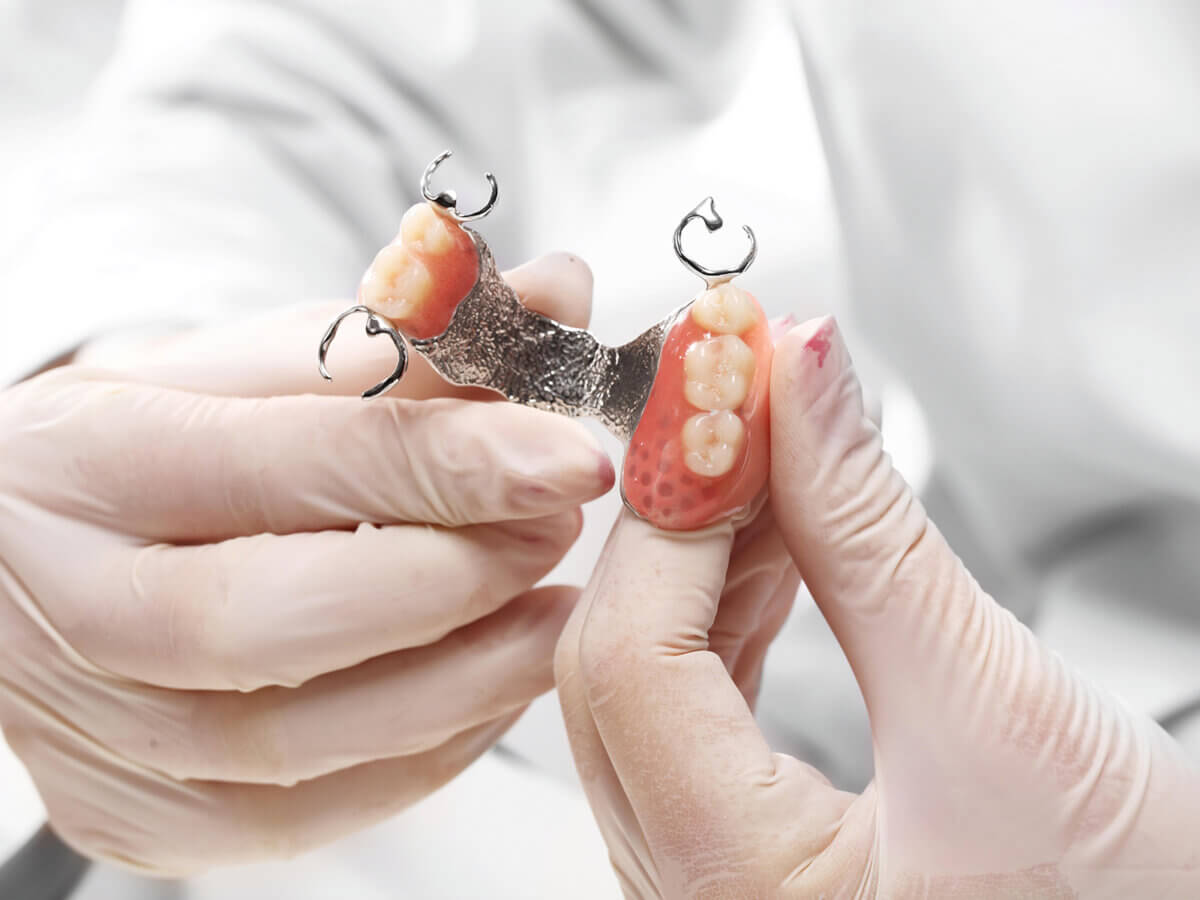Blog
Dental hygiene tips for healthy teeth & gums

What are flexible partial dentures?
Dentures are a popular option for people suffering from tooth loss caused by an injury, decay, or other dental problems. However, not all implants are created equal. One option that many people are turning to is flexible partial dentures. In this article, we’ll learn about the same and see how they work and the benefits they offer.
What are flexible partial dentures?
Flexible partial dentures are a type of removable denture designed to replace one or more missing teeth. They are made from a thermoplastic material that is lightweight, comfortable, and durable. Unlike traditional implants, which are often made from rigid acrylic resin, these dental devices are designed to adapt to the mouth’s contours.
How do flexible partial dentures work?
These devices work by attaching to the remaining teeth in the mouth. They are designed to fit snugly around the remaining teeth, using small clips or hooks to hold them in place. It allows the denture to stay in place while eating and speaking and provides a comfortable and secure fit.
In order to get a set of these dentures, a dentist will first take impressions of the patient’s mouth. It involves using a putty-like material to make a mold of the teeth and gums. The mold is then sent to a dental laboratory, where the flexible partial dentures are custom-made to fit the patient’s mouth.
Once the prosthetics are ready, the patient will return to the dentist’s office for a fitting. During the fitting, the dentist will ensure that the prosthetic fit correctly and make any necessary adjustments to ensure a comfortable fit. The patient will also receive instructions on how to care for and maintain their new dental device.
What are the benefits of flexible partial dentures?
There are several benefits to choosing flexible partial dentures over other types. Here are just a few:
- Comfort: These are made from a soft, pliable material that is gentle on the gums and teeth, making them more comfortable to wear than traditional dentures, which can be complicated and rigid.
- Natural appearance: These dental devices are designed to blend in with natural teeth, making them less noticeable than other types of implants. They can also be customized to match the color of the surrounding teeth, giving the patient a more natural-looking smile.
- Easy to clean: Flexible partial dentures can be easily cleaned with a soft-bristled toothbrush and mild soap or denture cleaner. They do not require any unique cleaning solutions or adhesives.
- Affordable: Flexible partial dentures are often more affordable than other devices. It makes them a good option for people who cannot afford more expensive dental treatments.
- Non-invasive: Because such devices are attached to the remaining teeth in the mouth, they do not require invasive procedures like dental implants or bridges. It makes them a good option for people who want to replace missing teeth without surgery.
Are there any downsides to flexible partial dentures?
While there are many benefits to choosing flexible partial dentures, there are also a few downsides to consider. For example, because they are made from a soft, stretchy material, they may not be as durable as other types, and they may also be more prone to staining and discoloration over time.
Additionally, some people may experience difficulty adjusting to wearing this dental device, regardless of the type. Getting used to having a foreign object in the mouth can take some time, and some people may experience soreness or irritation.
Patients with severe gum disease or other oral health issues may not be good candidates for this type of prosthesis. Patients should carefully weigh the pros and cons of this type of prosthesis and work closely with their dentist to determine whether they are the best option for their unique needs and circumstances.


